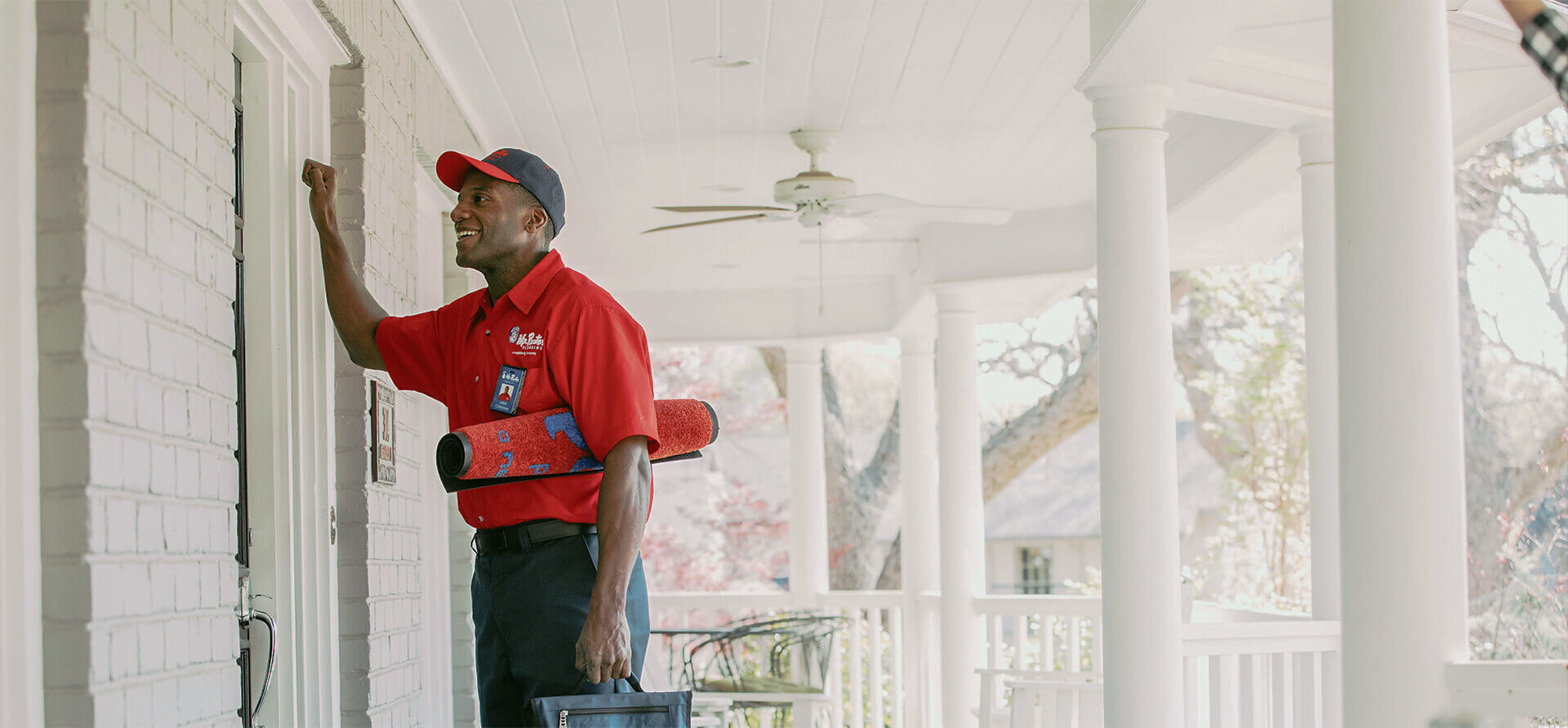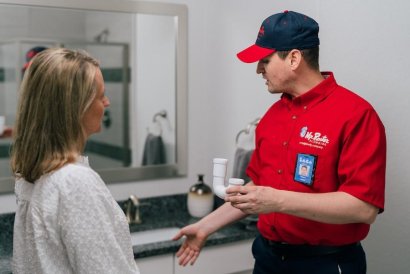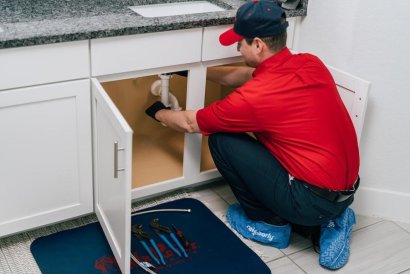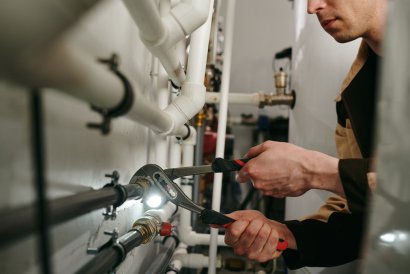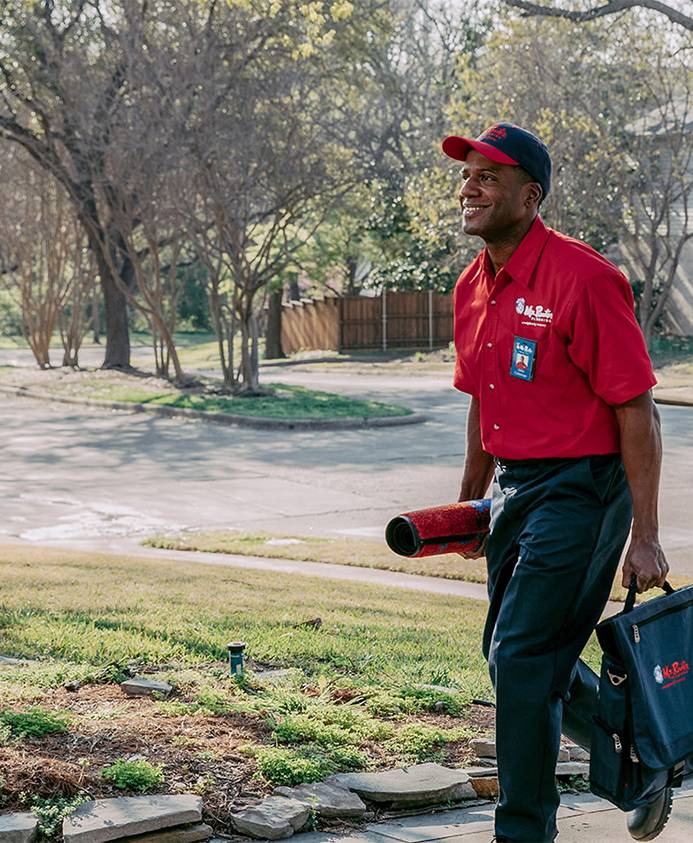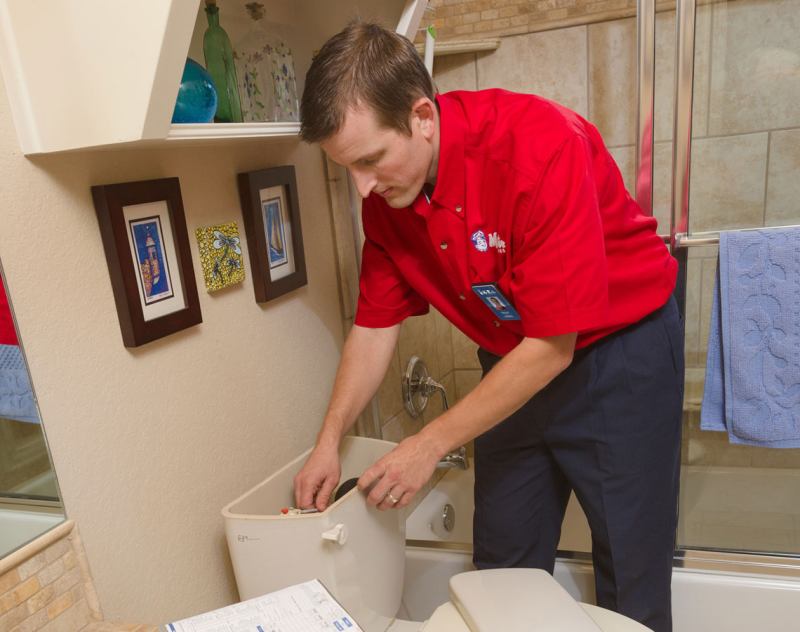A toilet covered in condensation is a troubling sight. “Sweating toilet” is a phenomenon that occurs when the temperature difference between the cold water inside the toilet tank and the warm, humid air in your bathroom forms condensation on the fixture’s surface. While it may initially seem harmless, a sweating toilet can create puddles that cause water damage, mold, mildew, and other unpleasant issues. As a reputable plumbing service, Mr. Rooter Plumbing recommends the following steps to prevent your toilet from sweating. This goes a long way to maintaining a dry and comfortable bathroom.
Decrease Humidity
The main reason for toilet tank condensation is the high humidity in your bathroom. Warm, moist air can cause your cold porcelain toilet to cool down, forming condensation. The most effective way to address this problem is to reduce the humidity in your bathroom. You can achieve this through proper ventilation. Install exhaust fans or open bathroom windows during and after hot showers or baths. In addition, a dehumidifier to maintain can lower humidity, preventing your toilet from sweating. Consult a professional plumber to determine the best option for your home.
Increase Temperature
Another effective way to prevent toilet condensation is to increase the temperature in your bathroom. Turn the thermostat or use a space heater to create a warmer ambient space. This reduces the temperature difference between the toilet tank and the surrounding air, reducing the chances of condensation. Consult a professional plumber to avoid overheating the bathroom and ensure a moderate temperature to prevent toilet sweating.
Insulate the Toilet
If you have a toilet installation or replacement lined up, hire a professional plumbing service to recommend tank liners or insulation kits. While these products are easy to install, work with an expert to create a solid barrier between the cold tank surface and the warm, humid air. Insulation is an effective way to reduce the temperature difference and minimize condensation on your toilet. In addition, you don’t have to worry about emergency toilet repair services because of water damage.
Reduce the Water in the Tank
Another approach to preventing toilet sweating is to reduce the amount of cold water inside the tank. You can achieve this by lowering the water level in the tank. Most toilet tanks have a water level regulation valve that allows you to control the amount of flushing water. This decreases the amount of cold water in the tank, minimizing the risk of condensation. Consult a plumber to adjust the water level valve during a toilet replacement or installation project without compromising system performance.
Check the Flapper Valve
While fixing a faulty flapper valve is easy, delaying maintenance can cause sweating and toilet repair emergencies. A worn-out or poorly sealed flapper valve can cause continuous cold water flow into the bowl. This can exacerbate condensation problems, prompting a professional toilet replacement to mitigate further wear and tear. Call a plumbing service immediately if you replace the valve and notice water flowing into the tank.
Dealing with a sweating toilet can be a frustrating and inconvenient problem in your bathroom. However, these helpful tips can help prevent toilet tank condensation and maintain a dry and comfortable environment. Contact us at Mr. Rooter Plumbing and schedule a consultation with our experts. Our toilet repair team leverages extensive expertise to protect your bathroom from water damage and the subsequent consequences.


